Since 2005 an entire population of endangered Purple-crowned Fairy-wrens has been intensely monitored at AWC’s Mornington Wildlife Sanctuary in the Kimberley. This bird, which lives in dense riparian vegetation, has declined across most of its range due to impacts from wildfire and feral herbivores.
Between 2005 and 2018, the population on Mornington bucked trends elsewhere in its range and doubled in size, as the habitat was restored and the number of breeding pairs increased.
However, between November 2018 – November 2019 the population experienced a 41% decline, most likely as a result of drought and a fire in the study area.
Hoping to shed further light on recent declines, this year’s team is now in the field for a six-month long field season, tracking individuals and their breeding attempts. This vital conservation research will enable a deeper understanding of the effects of fire, and help put plans in place to minimise the impact of such riparian fires in the future.
Mornington’s Purple-crowned Fairy-wrens
Mornington provides vitally important, protected, habitat for Purple-crowned Fairy-wrens.
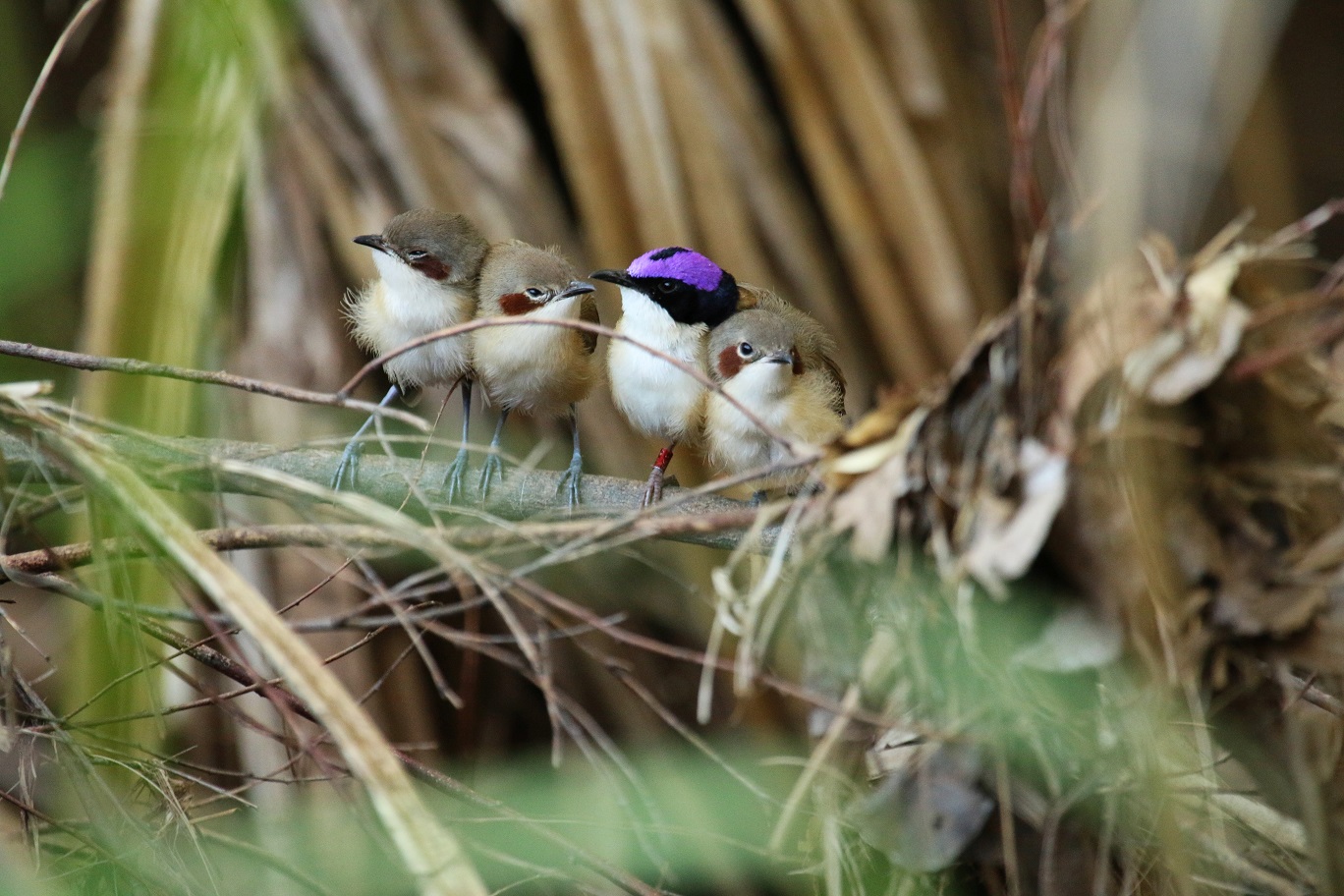 © Niki Teunissen/AWC
© Niki Teunissen/AWC
The wrens depend heavily on riparian vegetation; specifically Pandanus, which they nest deep within.
Elsewhere, this type of habitat has suffered fragmentation and degradation from cattle and fire, which has contributed significantly to the species’ decline.
However, as part of AWC land management programs, much of Mornington has been protected from stock grazing and fire, resulting in dense pandanus which provides year-round refuge for the endangered wrens.
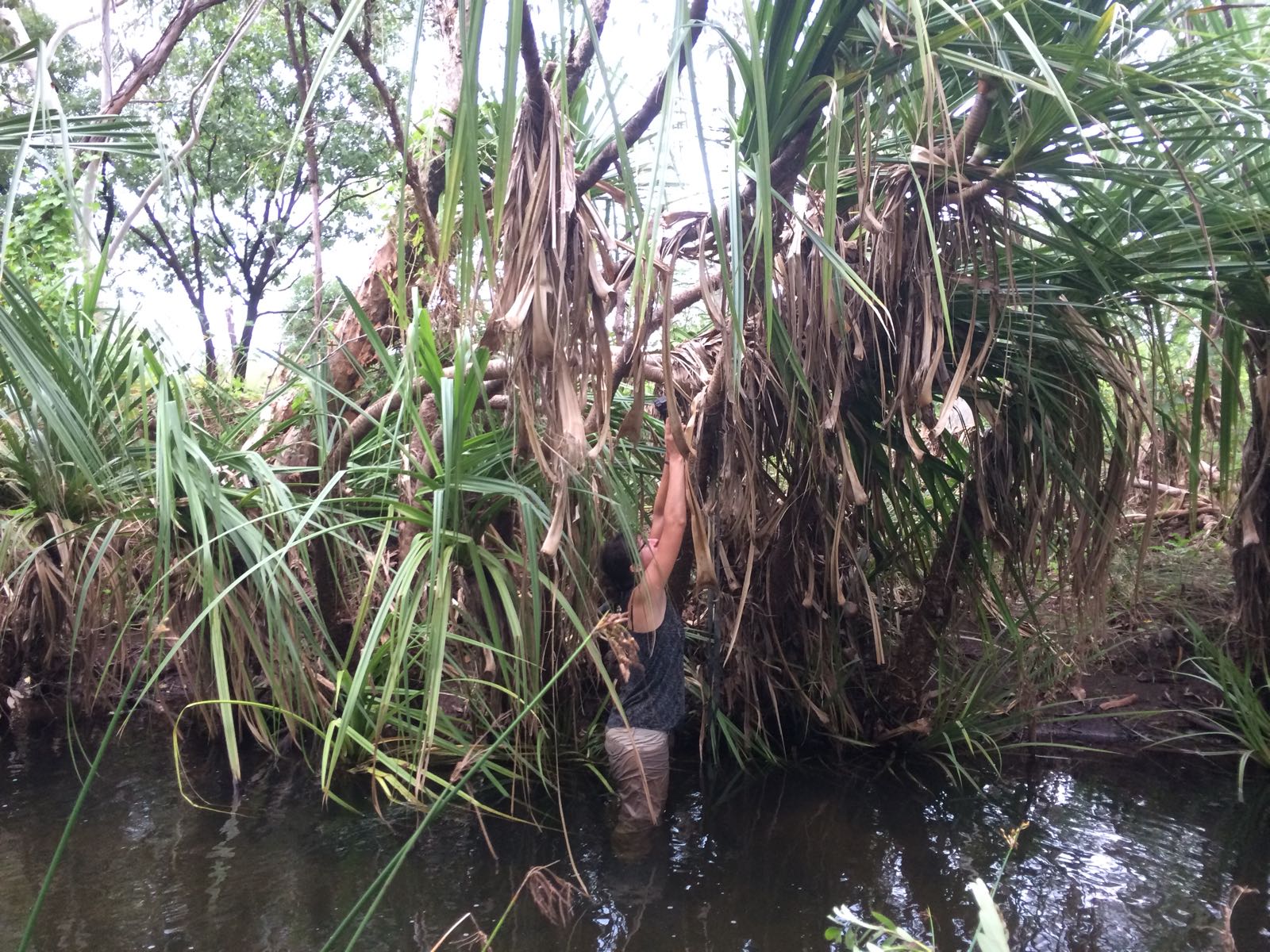 © Niki Teunissen/AWC
© Niki Teunissen/AWC
Vital conservation research
Led by Dr Anne Peters of Monash University, researchers have studied Mornington’s Fariy-wren population since July 2005.
Long-term genetic information, used alongside detailed colour banding, has enabled the team to track individual birds throughout their entire lives; providing rich data on survival rates, movements in and out of the population, breeding behaviour, and factors influencing reproductive success and longevity.
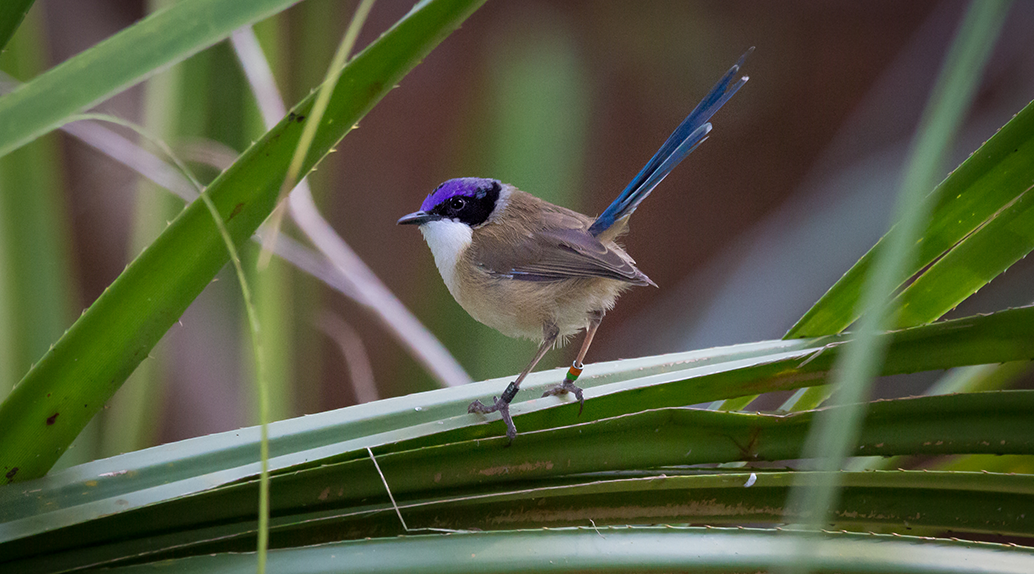 © Brad Leue/AWC
© Brad Leue/AWC
This information is highly valuable when planning conservation programs, informing strategies for fire and feral herbivore protection, restoration of habitat, predator management, and perhaps, future translocation(s).
Field leader for 2020, Evolutionary Biologist Niki Teunissen, from Monash University, has been part of the research group here since 2014.
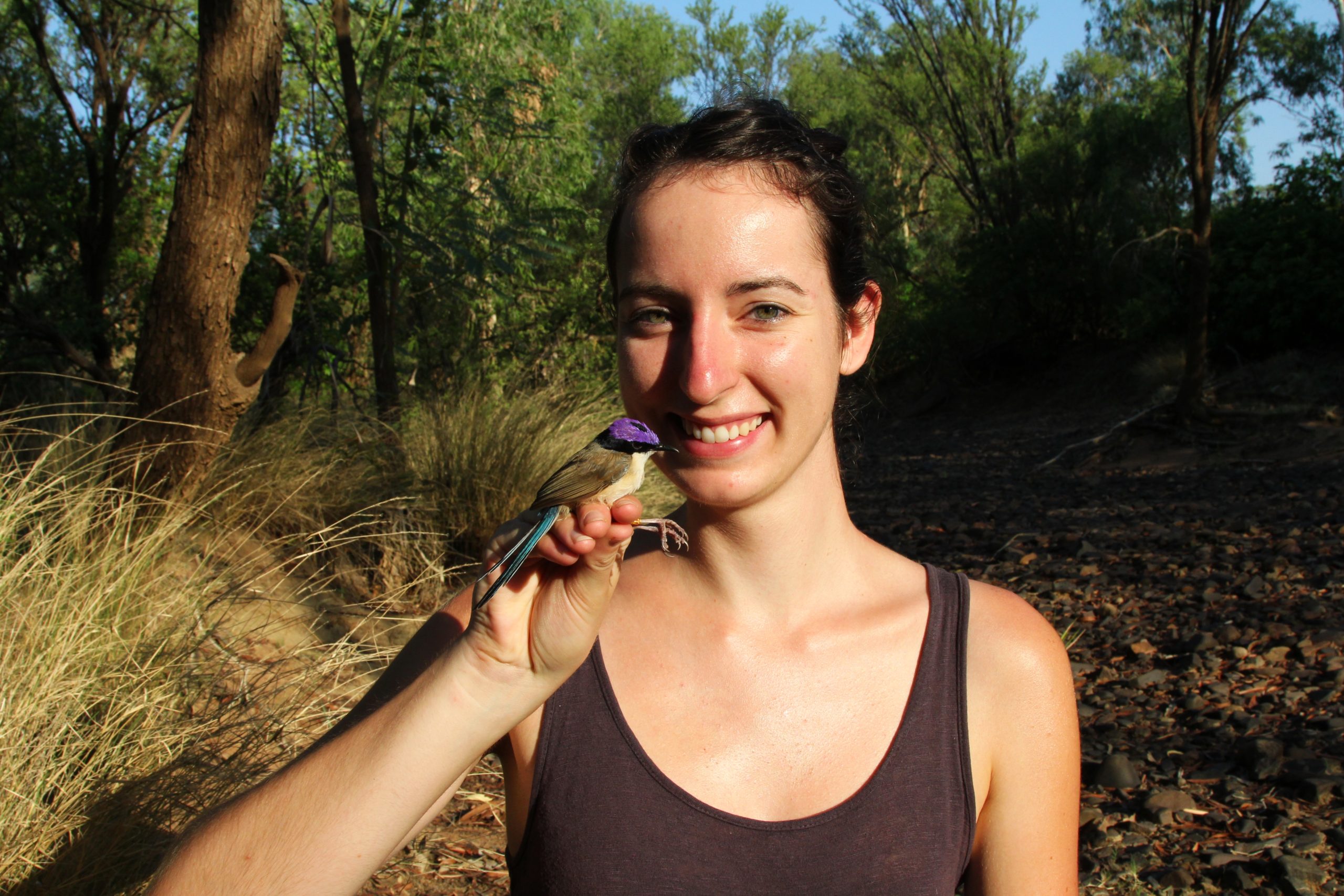 © Niki Teunissen/AWC
© Niki Teunissen/AWC
Initially an MSc research student from the University of Groningen, Niki has gone on to produce a PhD (with Monash University) on the Mornington population, spending five months a year at Mornington since 2016. Continuing the research collaboration between Monash and Groningen Universities, MSc student Jana Riederer will be assisting Niki, as well as volunteer field assistants Ellyne Geurts and Odile Maurelli.
This year’s team is once again keeping track of all the breeding attempts by the wrens, as well as hunting for and monitoring all nests closely.
 © Niki Teunissen/AWC
© Niki Teunissen/AWC
Predator surveys will continue to be conducted to quantify the abundance of nest predators on Annie Creek – something especially important following the arrival of cane toads.
These surveys enable researchers to track potential changes in the suite of predators present and the threat they pose. For example, the team has recorded large centipedes predating on the eggs.
 © Niki Teunissen/AWC
© Niki Teunissen/AWC
Small thermometers are placed in nests to monitor and record temperatures, and motion-triggered cameras are set up to record egg development, monitor how much each bird in the group helps to feed nestlings, and capture any potential predation events.
 © Niki Teunissen/AWC
© Niki Teunissen/AWC
Flooding events are similarly problematic and closely monitored. Fairy-wrens prefer to nest low down in pandanus to avoid predators, making them more susceptible to losing nests in a flood.
More to come
So far in 2020, the team have found over one hundred fairy-wren nests. Cameras have been placed at thirty three of these (those which contain eggs and/or chicks).
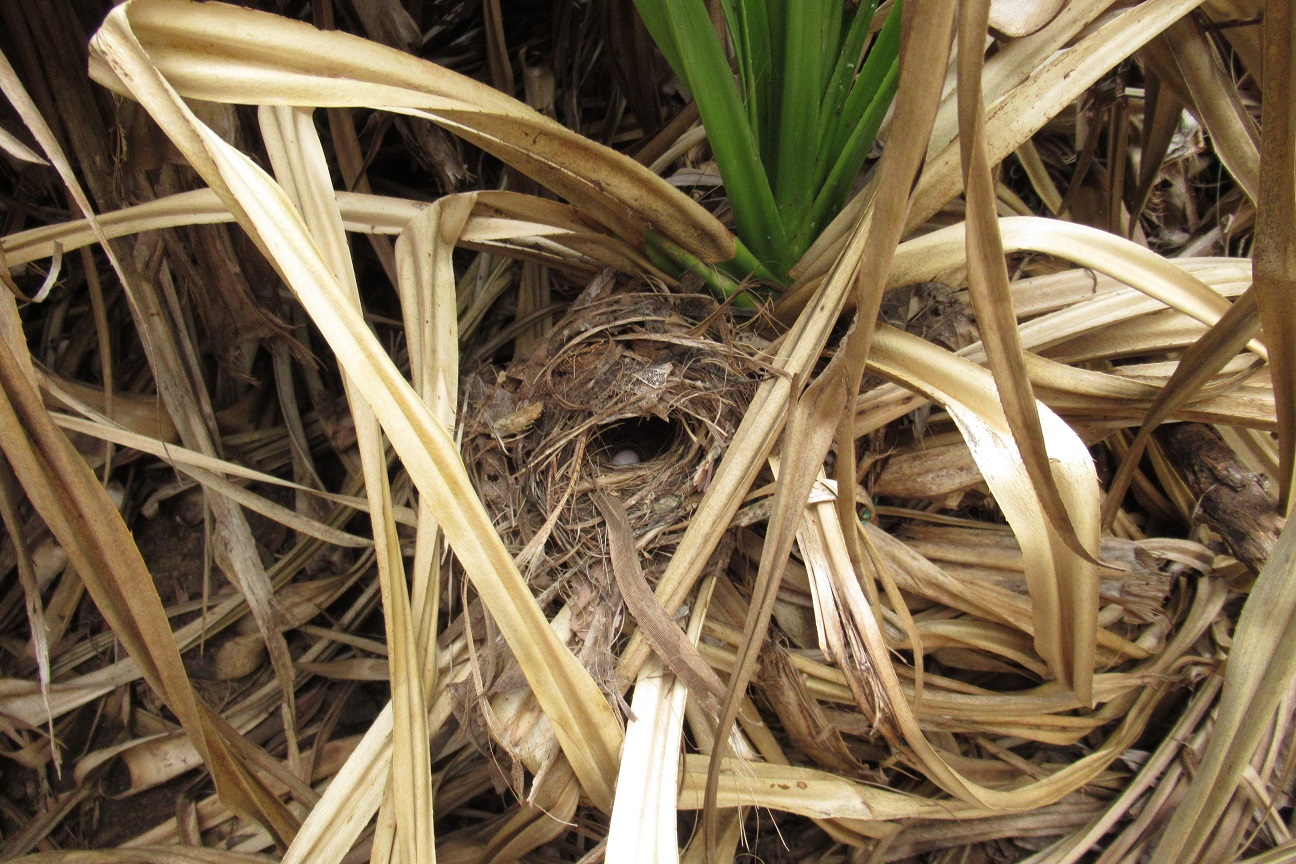 © Niki Teunissen/AWC
© Niki Teunissen/AWC
Over the coming weeks, they will aim to survey the entire study population.
Updates will follow on how the population is coping after a very dry year, in terms of both survival and breeding success.
Help us conduct vital conservation research to protect endangered species
Donate Now